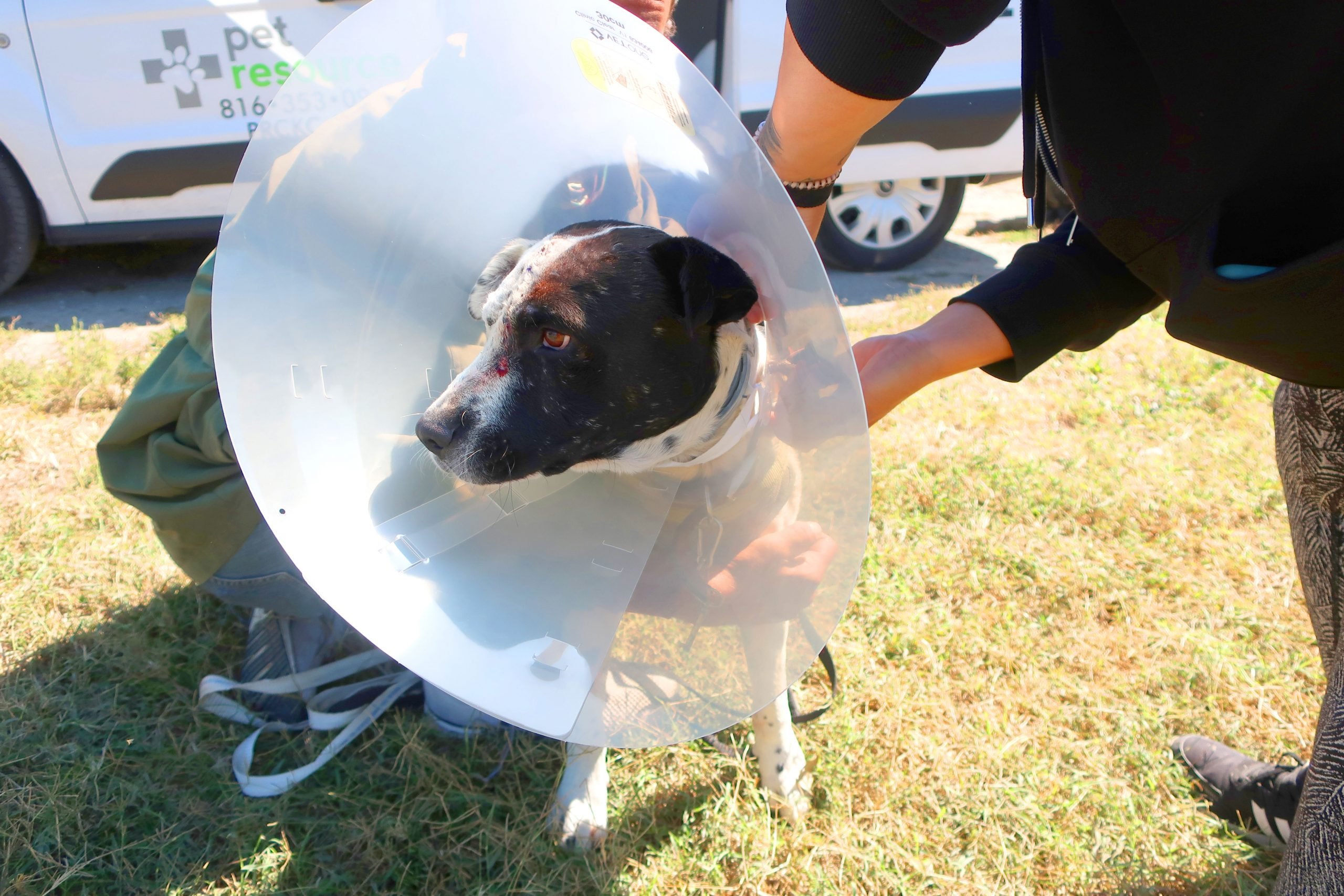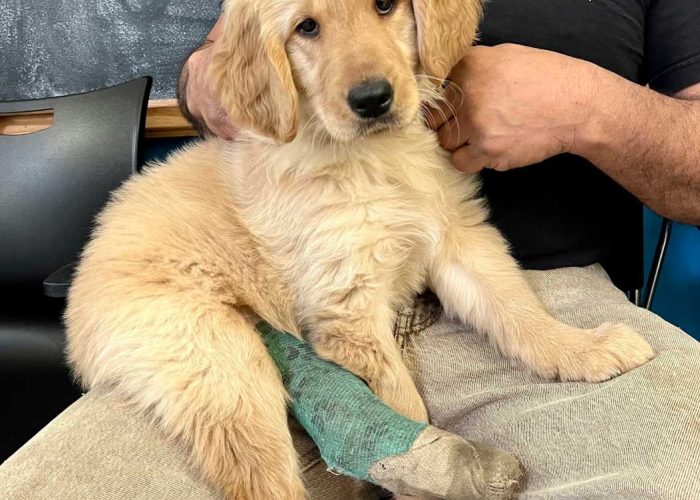Some things, you don’t forget. You can’t.
For me, Lucas’ face will be one of those things.
I’m not a veterinarian, I’m in communications. Working here, I’ve gotten used to the idea that I’m going to see some things that might be off-putting to most people. Sometimes you see a dog that’s been bitten by another dog. Sometimes you have to ask the doctor a question while they’ve got a pet on the surgery table. But I’d never seen a dog who’d been slashed across the face by a machete, and never hope to again.
We’d actually met Lucas a couple of months before, at a homeless camp. It’s not unusual for us to do this kind of outreach, especially this year. The pandemic and its fallout have left a lot of people in the lurch, and they need help. We do what we can to keep pets and people together, and that includes homeless folks; they need the mental and emotional support that a pet provides more than anyone. And in truth, a lot of the homeless folks we come across, their pets are incredibly well taken care of. Much of the time, their pets are what keep them going, what they’re living for. That’s a precious thing, and they hold onto it.
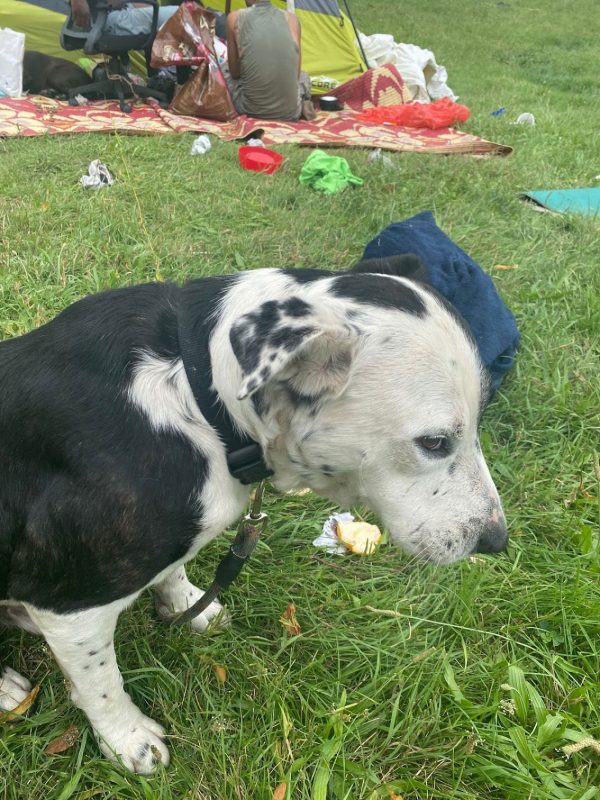
While we’d helped Lucas with resources last time we saw him, this was a much different scenario. A woman named Red called us from the camp, saying that a man with a machete had hurt a dog and they needed help. Because they had no transportation, they couldn’t bring him to us. After consulting with the doctors on a plan of action, I hopped into our mobile unit with Ramona, our Community Field Coordinator, and we headed out to go pick him up.
This camp is in a field. Most tents are at the far end of the field, as far as they can be from the street. A few dot the worn dirt path that goes back as far as I can see. There are more tents down the hill, we’re told, but we can’t see them from here. I can see the Kansas City skyline far off in the distance. I think about all the times I’ve looked at this skyline, forgetting that among all this beauty there’s so many people who need so much help, if only you know where to look.
When we arrive there’s already another car there. A man is taking food out of his trunk and dispensing it to the people in the camp, who have come over from their tents to get what they can.
And I immediately feel guilty for being in this place. Their faces are dulled by the struggle of their existence, lined with worry. I feel like I’m intruding on something private, something not meant for me.
A large sign between two tents explains the rules of the camp. If it’s not your tent, don’t go in. If it’s not your stuff, don’t touch it. The sign promises that you will be escorted out of the camp if you break these rules.
The people notice us and start coming over. A woman introduces herself as Red, and yells for someone to bring Lucas over.
And there he is. The gash is long. And open. He’s sitting there quietly, sort of looking around. He seems like a really sweet boy. I feel anger rising in my chest that somebody would do this to anyone, much less a defenseless animal who doesn’t seem like he’d ever do anything to anybody.
When we ask for details, everybody starts talking. I have no doubt these folks are used to not being heard, so when they have a chance to talk, they want to tell you everything. We start getting conflicting information. Lucas’ owner, a man they call New York, isn’t at the camp right now, and Red’s watching the dog for him. People start talking over each other, trying to get their understanding of the details out. It gets confusing, so many people talking.
At this point people are starting to ask about services that we provide, and telling us their needs. Dogs with worms are a problem, especially for the litter of puppies in the camp (that we will follow up on to make sure they get fixed). Food, obviously, is a problem. But even just basic things like food bowls are needed. Collars, leashes. We’re definitely going to come back with resources, but right now we need to get Lucas to the clinic so we can stitch this sweet boy up.
On the ride there, he just sits in the back seat, looking out the window. He’s been in a car before, you can tell that much. I snap a few pictures until I see him yawn; that means he’s getting uncomfortable and I don’t want to be the cause of that.
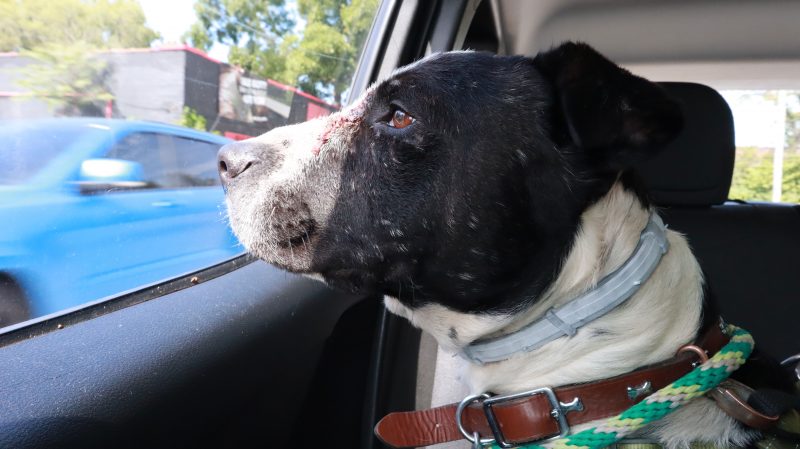
Work basically stops for a minute when we arrive at the clinic. Everybody wants to know what happened. When Dr. Albrecht touches the area around the slash, Lucas flinches. He doesn’t get aggressive, though. I don’t think he has that in him, to be honest.
They decide that they’re going to try to suture the wound since it’s so bad. They get a weight on him so they can work up the amount of sedative he needs. He’s in one of the surgery kennels, and I sit with him as much as I can because he’s definitely nervous about what’s going on.
The surgery goes alright, but then there’s the aftercare. What kind of pain medication do we prescribe? If we give pills, are we putting Red in danger? It’s possible. The rules of the camp say don’t touch it if it’s not yours, but who can say what’s going to happen? We opt for an injectable instead. Do we give an e-collar? We opt to not give one, just to see how he does without.
The main thing is making sure that Red understands the post-care instructions. With all the chaos at the camp, things get lost.
I’m already gone for the day when Ramona takes Lucas back, but everything goes well. Alice from Angel Hearts Rescue goes with her instead. Alice is practically a saint. She works with the homeless community to help get their pets vaccinated and fixed. It’s not her job; she has a full-time job, but is out most evenings trying to bring some comfort to homeless pet owners.
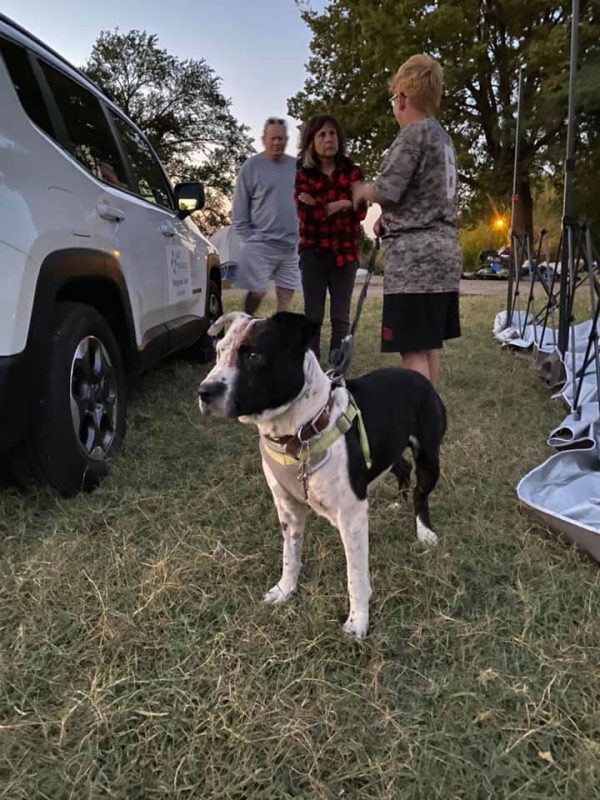
Together, they return Lucas to the camp and give instructions on caring for the wound. We’ll be back in two weeks to snag him again and get the stitches removed. Will he be here? We hope so. It’s never a sure thing. What if the city decides the camp has gotten out of hand and disperses it? What if there’s more violence? What if something happens to Red?
The next day I go out with Rae and Lisa to the camp again, to get a sense of what supplies they need that we have available. Dewormer for the pups. Food. Treats. Toys. Harnesses. Leashes. We make a list, come back to the clinic, load up one of the vehicles, and go back to distribute what we’ve brought. It doesn’t fix every problem they have with their pets, but it helps, and everyone’s very grateful for what we’ve brought.
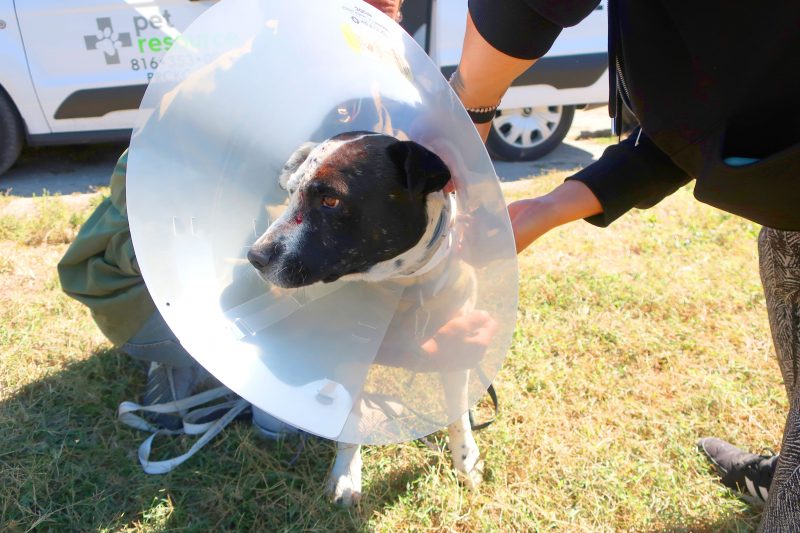
We bring an e-collar for Lucas, since he’s been rubbing his head on the ground to get at the wound. He’s head-shy now, understandably, and is clearly uncomfortable with the plastic cone, but he’s a good boy, and we need that wound to heal up well.
We’ve done some good, I think. It’s difficult to see it, though, because of all the problems these folks are still facing. It feels like a wound that won’t stop bleeding no matter how much pressure we apply. Nobody expects to find themselves without a home. These people are just trying to survive, and it takes the help of several different organizations to keep them going. Hope Faith Homeless Assistance provides showers and food, PRCKC and Angel Hearts are both helping with their pets, and there were several other people who showed up during our visits with other supplies.
But it’s not enough. It never is. It’s hard to maintain any sense of positivity about the situation when you see one of these camps, when you talk to the people and see the struggle up close. But we keep pushing, all of us, to do what we can to bring them some relief. It’s all they’ve got. Lucas meanders around the camp with his cone, and while watching him I wonder what the future holds, what other things he’s seen and experienced. Today, at least, we were able to help.
